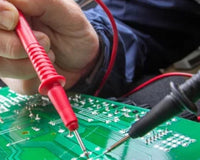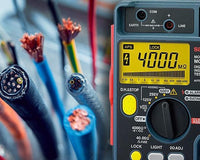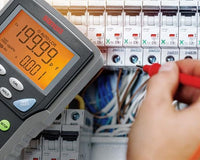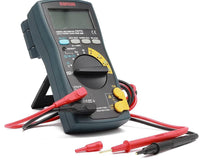What is Continuity?
Before getting started on ‘How to measure/check continuity’ we need to understand what continuity is. Just as the name suggests it’s the presence of a continuous path for the current to flow. When the path is not continuous or incomplete then continuity does not exist and the circuit is open. A closed circuit is continuous, an open circuit is not.
How to perform continuity test
Step 1: Turn OFF the power supplyBefore performing a continuity test it is always recommended to turn off the power supply to avoid damaging the digital multimeter. Since the digital multimeter sends a small current between the two probes, an external power source can severely affect the device’s performance or can permanently damage it.
Step 2: Probe configurationOnce you have turned off the supply, ready your instrument by connecting the probes in their designated ports black for COM and red for voltage/resistance
Step 3: Probe placementAfter selecting the radio wave symbol which resembles a Wi-Fi symbol, keep the probes along the path of interest to check continuity. If the path is closed then the buzzer in the multimeter will turn ON and will alert the user otherwise it will stay OFF.
There are many applications when it comes to using the continuity test and here are a few:
Breaks in connections
To check if a solder joint or a jumper wire is connected properly, a Continuity Test can be performed for quick verification.
Internal Shorting of IC’s
To check if your integrated chip has been damaged internally, using the datasheet of the IC and performing a continuity test, users can verify if their chip has been shorted internally.
Reverse engineering a PCB
Continuity tests are great for reverse engineering a PCB as they allow users to re-create the original circuit diagram with the need for its datasheet.
Fuse check
To verify if a fuse is blown, simply place the tip of the probe on the ends of the fuse. If the fuse is in good condition the buzzer will turn ON and alert the user otherwise it will stay OFF which means that the fuse is blown and needs to be replaced.






